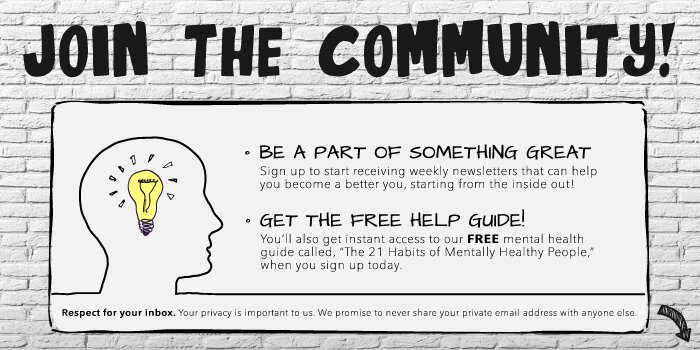Dangerous and Common: What You Need to Know About Adderall Abuse
Doctors are once again expressing concern about the abuse of Adderall, a commonly prescribed medication for attention deficit hyperactivity disorder (ADHD).
Many college, high school, and middle school-aged students believe the “good grades” drug will give them an edge and help them improve focus, but it has a dark side of which they may not be aware: Adderall can cause permanent damage to the body.
Unfortunately, the drug isn’t hard to obtain. Adderall is used by as many as 6.4 million children who have been diagnosed with ADHD, which makes it very accessible.
Just how common is prescription stimulant abuse?
Accumulating evidence suggests that millions of Americans are engaging in the unsupervised and illegal use of Adderall and other prescription stimulants, including Ritalin and Concerta, and hundreds of thousands are becoming addicted to these drugs. An estimated one-third of legal stimulants produced in the U.S. ends up being distributed illegally, often for highly affordable prices.
Last year, a study showed that one in six college students misuses ADHD stimulant drugs. And, a recent analysis of national data from anonymous surveys of more than 240,000 teens and young adults revealed that the peak age range for starting to use these drugs without a prescription (in order to get high or for other effects) is between 16 and 19 years.
Adderall increases alertness and attention. Because it increases serotonin, norepinephrine, and dopamine levels, the drug can trigger a feeling of euphoria.
As a result, it has become a drug of choice among people trying to get “high,” who often crush and snort the pills or mix them water and inject them. Adderall also can suppress appetite, which has led a growing number of people to misuse it as a diet drug.
What IS Adderall, and what are the risks associated with the drug?
Adderall contains a combination of amphetamine and dextroamphetamine. Amphetamine and dextroamphetamine are central nervous system stimulants that affect chemicals in the brain and nerves that contribute to hyperactivity and impulse control.
Common side effects of the drug include:
- stomach pain, loss of appetite
- weight loss
- mood changes, feeling nervous, anxiety
- fast heart rate
- headache, dizziness
- sleep problems (insomnia)
- dry mouth
- bladder pain, and difficult, burning, or painful urination
More serious side effects include:
- confusion
- convulsions
- difficulty breathing, speaking, and/or swallowing
- dizziness
- inability to move the arms, legs, or facial muscles
- hallucinations
- muscle spasms or jerking of all extremities
- sudden loss of consciousness
- swelling of the feet or lower legs
- tightness in the chest
- uncontrolled repeated movements and/or vocal outbursts
- elevated blood pressure
- heart attack
- sudden death
The Drug Enforcement Agency (DEA) classifies drugs into categories based on the drug’s acceptable medical use and its abuse or dependency potential. Adderall (and its cousin Ritalin) have both been classified as Schedule II, which means they are defined as drugs with a high potential for abuse, with use potentially leading to severe psychological or physical dependence. These drugs are also considered dangerous.
Why are doctors issuing a warning now?
There are several reasons doctors are continuing to warn people about the risks associated with Adderall. The drug can cause blood vessel disorders, and health professionals recommend that users contact a doctor immediately if they feel any numbness in their hands or feet. And, users develop a tolerance to its effects and find they can no longer function properly without it.
Dr. Jeannine Hogg, a Baptist Hospital pediatrician, compares it to crystal meth:
You can see heart problems, racing heart rate, people have underlying heart issues , you can see risks for heart attacks, increased blood pressure. So these are all things we can see, particularly if someone is taking it and they are not supposed to be taking it. They are abusing it and possibly taking more of than they should at one time.
Why are so many people being prescribed stimulant drugs?
Dr. Lawrence Diller, a behavioral and developmental pediatrician, says it is worth questioning how many people actually need prescription stimulants like Adderall, and points out that there is no objective test for ADHD.
He writes:
ADHD can be a challenging diagnosis to make even for trained physicians, as the ability of people to pay attention or remain calm falls across a broad bell-shaped spectrum. In turn, the majority of patients who land a diagnosis straddle a line where problematic attention and performance merge into variations of normal.
Even if there were a biological metric, someone would have to make an arbitrary decision about where to place the cut-off between normal and not, inevitably defining a large chunk of the population as borderline for ADHD.
Despite plenty of efforts among researchers, diagnosis remains a subjective decision in the hands of the psychiatrists, pediatricians, psychologists and other experts who evaluate patients.
Production levels of the drug are astonishingly high:
A total of 194 tons of legal stimulants were produced in the U.S. in 2013, enough to mold into 27 round, blue 20-mg Adderall pills for every man, woman and child living in America today. American manufacturers of legal speed earn an estimated $9 billion a year.
With widespread ADHD diagnoses comes the widespread availability and abuse of dangerous drugs like Adderall.
Are there safer alternatives to Adderall and other stimulant drugs?
Some doctors recommend a safer supplement like B-12, along with dietary and lifestyle changes to boost mood and energy levels. For a wealth of information on these options, please read Everything You Need to Know About ADHD.
Related Reading
ADHD Diagnosis Rates in the US Have Skyrocketed, Study Finds
ADHD Medications Linked to Sleep Troubles in Children, Study Finds



